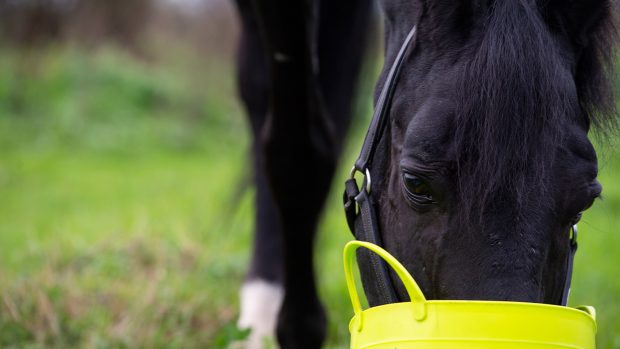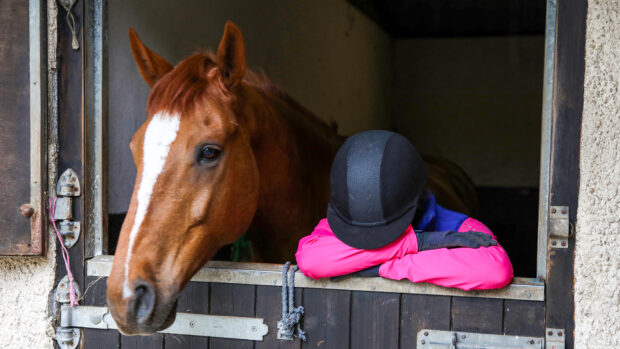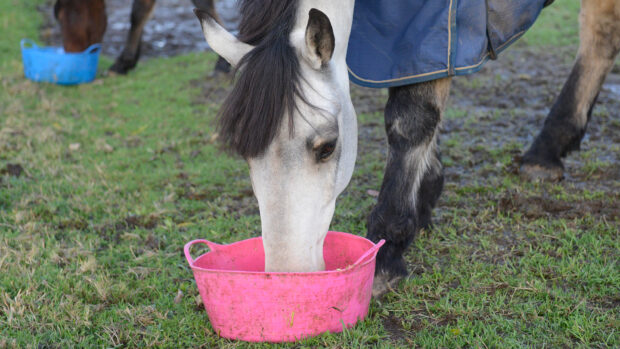Spillers' equine nutritionist Clare Barfoot provides one H&H forum user with some helpful advice on how to feed a horse with suspected gastric ulcers
Q: “My dressage horse hasn’t been quite right. He hates having his rugs on, fidgets when I tack him up, is fussy about having his feet picked out with his saddle on, has started moving away when I try to get on and is reluctant to go off my leg as much as he was. All of these signs lead me to think he might have gastric ulcers. If the vet tells me this is the case, what recommendations do you have for feed and supplements? He is in substantial work.”
A: You are right to investigate gastric ulcers especially if these are all new behaviours at least to confirm or eliminate ulcers as a cause. If your vet does confirm a diagnosis firstly he will need to be medically treated to clear up any existing ulcers. However as ulcers can be caused by many factors it is important to address all the potential management factors you can, one of the most important is nutrition and nutritional management.
Continued below…
Related articles:
- H&H forum: find out what H&H readers suggested
- Find out more about gastric ulcers
- How to keep gastric ulcers at bay: simple 12-step plan *H&H VIP*
- Try to follow the tips below to help reduce the risk of the ulcers re-occurring:
- Feed as much fibre/forage as possible at a minimum of 1.5% of bodyweight (dry matter) per day.
- Avoid prolonged periods without forage.
- Avoid straw being the sole or predominant forage source.
- If extra energy is needed look for feeds that have restricted starch and sugar levels and added oil rather than cereals.
- Aim to feed < 1g/kg bodyweight of non-structural carbohydrate (NSC: starch plus water soluble carbohydrate) per meal and preferably Try to spread meals across the day- multiple small meals are better than one or two large ones.
- Add chopped fibre to every meal – especially alfalfa which has been shown to help buffer gastric acid.
- Avoid very stalky sharp chopped fibre which can increase the risk of damage to the stomach wall.
- Provide a small chopped, fibre based meal or access to forage before exercise to reduce gastric acid splashing up onto the sensitive unprotected upper non-glandular part of the stomach.
- Turn out to pasture as much as possible.
- Provide access to water at all times.
- Avoid using electrolyte pastes.
- Provide forage while travelling.
Continued below…

As your horse is working hard he will need additional energy to help maintain his condition. I suggest you try a high fibre, low starch cube such as SPILLERS RESPONSE Slow Release Energy Cubes alongside SPILLERS Alfalfa-Pro Fibre. SPILLERS has introduced Alfalfa-Pro, a high quality conditioning alfalfa blend with oil, supporting horses prone to gastric ulceration. SPILLERS Alfalfa-Pro is one of only five products in the UK to carry the prestigious BETA Equine Gastric Ulceration Syndrome (EGUS) Certification Mark.



